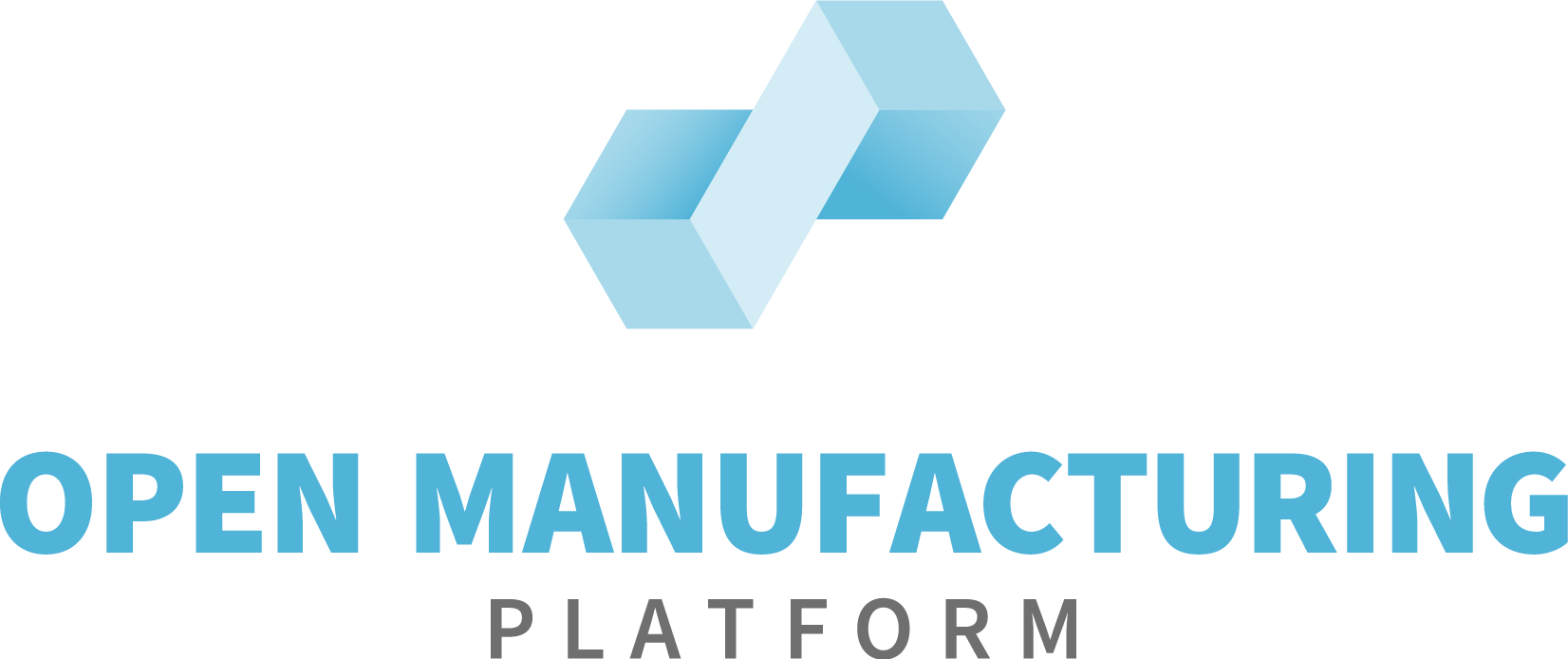Open Manufacturing Platform

Landing page for Open Manufacturing Platform in GitHub
What is a Manufacturing Reference Architecture (MRA)?
Reference architectures have long been accepted in the information technology sector as a set of recommended structures and integrations of IT products and services to form a solution that embodies accepted industry best practices, typically suggesting the optimal delivery method for specific technologies. They provide a frame of reference for IT professionals who are building systems for a new company or enacting a digital transformation within an established enterprise. Using a reference architecture saves time and resources by allowing IT teams to avoid reinventing the wheel and to execute a plan in an efficient and economical way.
Similarly, the manufacturing sector uses assembly process planning and manufacturing architectures that identify structural elements such as work points, transport systems, transfer systems, and buffers as a guide for implementing automation and efficiently building manufacturing assembly lines. Historically, this had been implemented at the plant level
But in recent years, there has been a merger between the worlds of information technology and operational technology. IT/OT convergence and more generally, enterprise-level digital transformation is driving the need for a new kind of blueprint for smart manufacturing or Industry 4.0/5.0. This blueprint is called a Manufacturing Reference Architecture or MRA and it is a critical component to building advanced manufacturing systems that take advantage of AI and IoT.
The MRA, rather than recommend specific products and services, is generally a supplier-agnostic view of all the capabilities needed to enable enterprise-wide digital transformation. Common features of an MRA include:
- Data flow-based use cases that define the MRA scope
- Requirements based on those use cases
- Vertical and horizontal functional value chain
- Overview of key characteristics and challenges
What are the characteristics of a good MRA?
There are many benefits of adopting a reference architecture for the digital transformation of a manufacturing-driven enterprise and they can vary across industries as well as the motivation and experience of the authors. In general, an MRA should provide for the following:
- Interoperability – The reference architecture should not confine the enterprise to a single vendor and should encourage use of suppliers that adhere to industry standards.
- The ability to innovate – A good MRA should not constrain innovation or become irrelevant when new technologies arrive on the scene.
- A map toward integration – When new innovations arise, the architecture should allow for integration of new and better processes and equipment.
- Scalability – An architecture should be able to scale both up and down to meet the changing needs of the enterprise.
- Versatility – The MRA must allow for changes to product lines, designs, manufacturing locations to name just a few.
Introducing the Open Manufacturing Platform’s Manufacturing Reference Architecture Working Group
The mission of the MRA working group is to provide hands-on guidance on how to define a reference architecture in today’s heterogeneous manufacturing environment. This architecture serves the needs of concrete smart manufacturing use cases while taking new capabilities and new business models into account.
Key areas of concern of the working group include data governance, cybersecurity, industrialization and productization, and enterprise deployment. Deliverables from the group will include:
-
A collection of dedicated Use Case whitepapers that focuses on particular manufacturing challenges.
-
Technical Architecture whitepapers and blueprints that discuss specific architecture templates, features, application ranges, and implementation aspects and guidance.
The first deliverable from the group is a whitepaper titled, Introduction to the OMP Manufacturing Reference Architecture: General Approach & Design Considerations. The paper is free and available for download here
Or on GitHub here: https://github.com/OpenManufacturingPlatform/MRA-Architectural-Considerations/tree/publication
The paper serves as an introduction to the Open Manufacturing Platform’s (OMP) Manufacturing Reference Architecture (MRA) and will set the foundation for upcoming releases and new publications. It aims to give the reader the foundation to understand the general concept of the MRA within the OMP initiative, its benefits, approach, vision, goals, and scope.